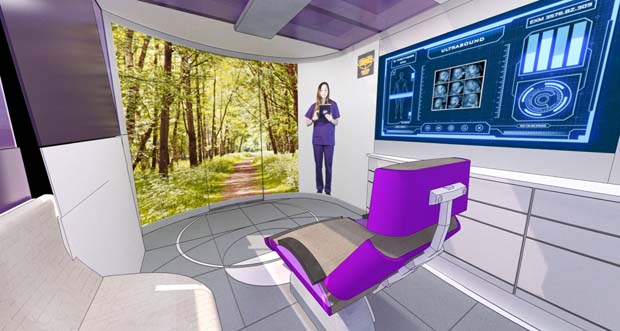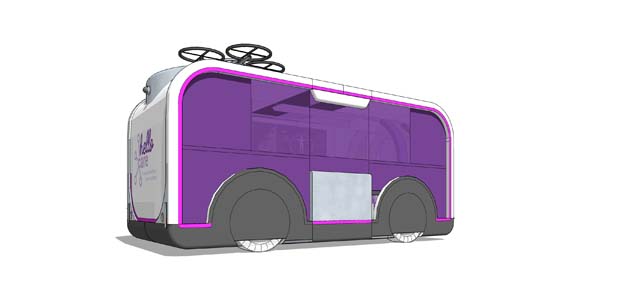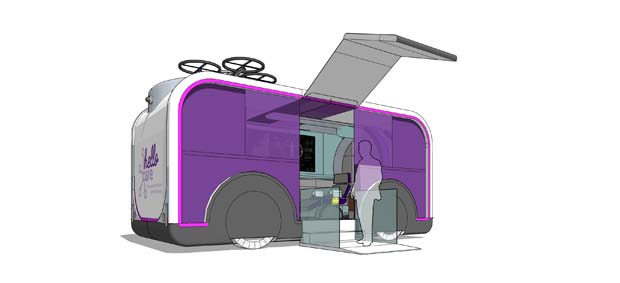Breaking Through Finalist: Hello Care
Two teams made it to the on-stage finale of Healthcare Design‘s Breaking Through conceptual design competition, presenting their innovative solutions to the future challenges of healthcare live during a general session at the 2018 Healthcare Design Expo & Conference in Phoenix. After the presentations, attendees voted for their favorite and the winner took home $10,000. Here’s a look at the runner-up.
Project: Hello Care—personalized healthcare, same-day delivery
Firm: AECOM
Presented on stage by: Christine Hester Devens, associate principal, senior interior designer; Jim Thomson, vice president, managing principal; and Greg Mare, vice president, healthcare practice leader, Americas
Challenge identified: To visualize the future of healthcare delivery, the AECOM team first assessed challenges inherent to the current state of the industry. Number one is access to care, including addressing the needs of seniors with mobility issues and the limitations of care delivery to rural areas. With wellness and prevention high on the national agenda to reduce preventable health threats, the team also recognized the importance of better collaboration between physician and patient. Additionally, expectations for an improved patient experience are soaring, including better support of family and friends in the care environment. Finally, the cost of care, including those tied specifically to readmissions and unnecessary ED use, were among challenges the team explored.
The concept
Hello Care is a system of autonomous vehicles that brings care to patients, eliminating the need for a clinic or hospital visit. Originating at a hospital or distribution hub, the vehicles deploy to where care is required. With a healthcare technician on board or functioning completely autonomously, the Hello Care vehicle combines robust telehealth with the technology necessary to conduct any typical healthcare visit. Patients could easily order services online and have a Hello Care vehicle delivered wherever they are to provide diagnostic and interventional procedures, sub-acute care or transitional care, and wellness support—all but the most intensive care.
Design features
The autonomous vehicle is based on the dimensions of a standard box delivery truck and a Ford extended cargo van, allowing enough space for a patient to stand inside and for imaging technology and an adjustable patient care apparatus. Inside the vehicle, a caregiver is virtually located next to the patient via a large interactive screen for telehealth visits. The patient is greeted upon arrival and interacts directly with the remote caregiver at all times. The central component to the space is a patient care chair that can take patient vitals and move in all directions or fold away.
Additional elements
- A drone for retrieval and delivery of medications, lab specimens, and other patient care elements.
- A sliding side panel on the vehicle that folds down to provide an accessible ramp/lift.
- Integrated imaging for diagnostic testing, including 2-D/3-D linear and 360-degree camera technology, and a “smart toilet” for urinalysis.
- Curved video screen for telehealth interactions and relaxing immersive imagery.
- Caregiver sofa to encourage social support.
- Storage for supplies and medication, stocked daily and unlocked as determined by a remote telehealth technician or RFID trigger.
- Ceiling equipped with UV disinfection.
- An adaptable chassis that allows for customization of the vehicle to a given environment.














